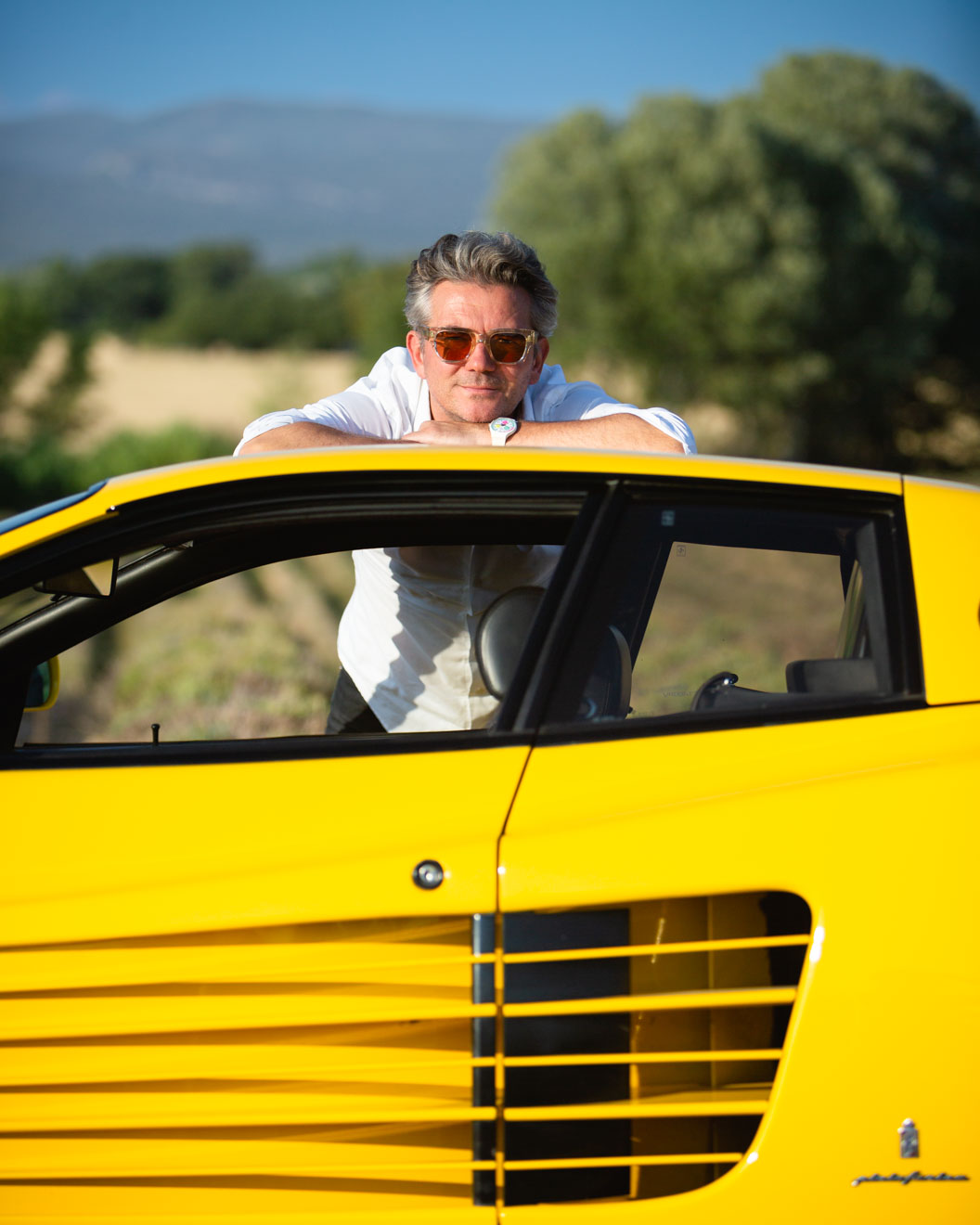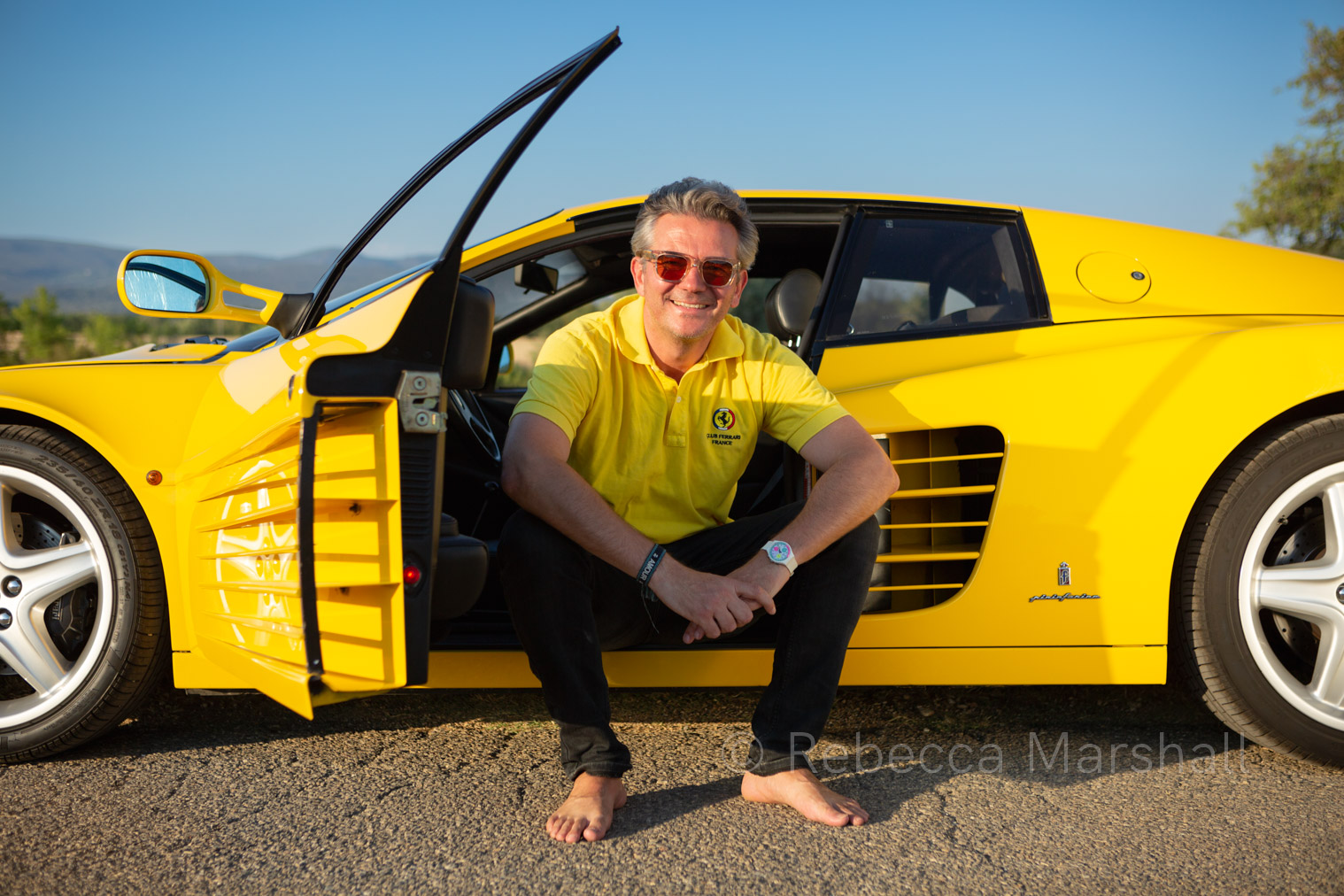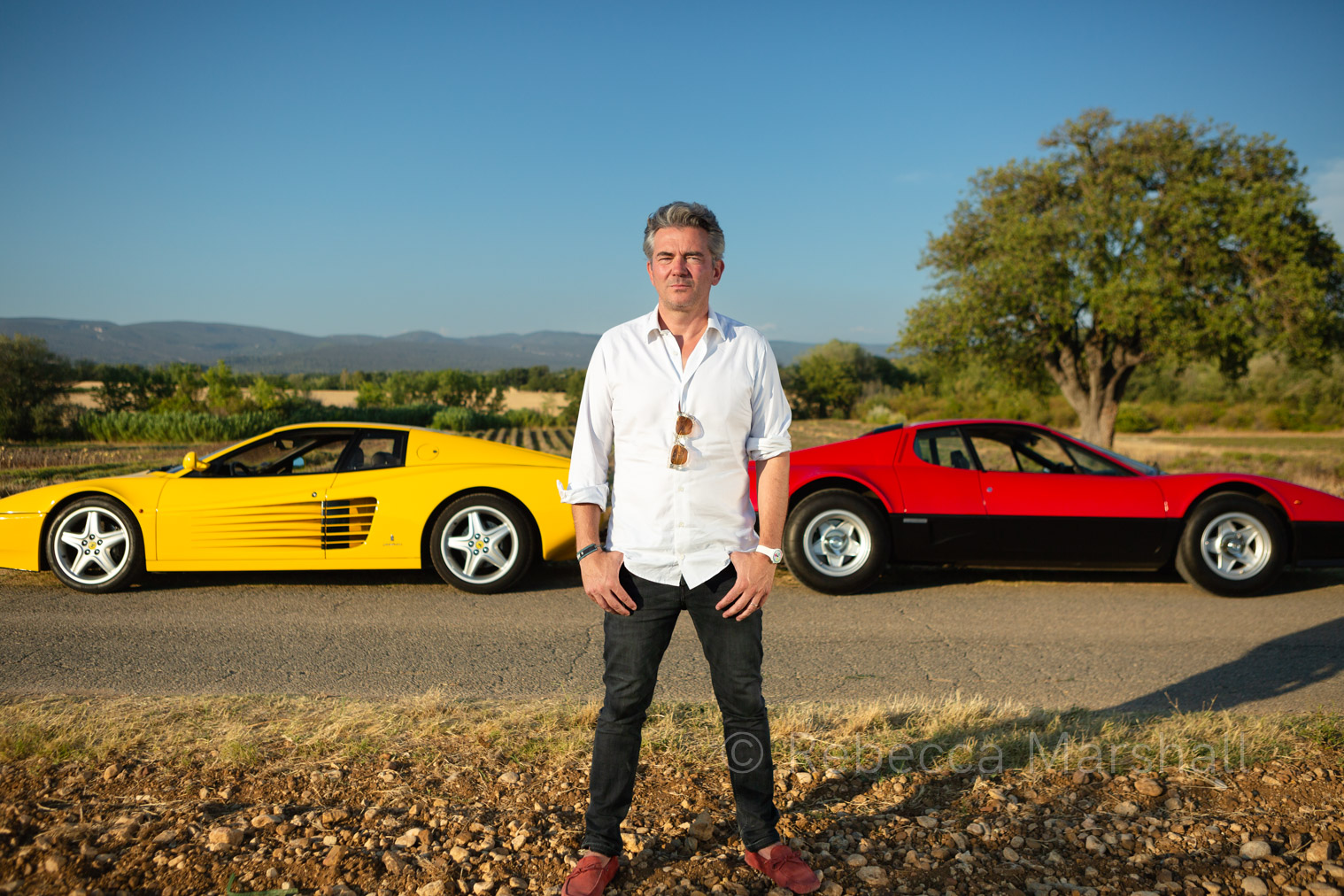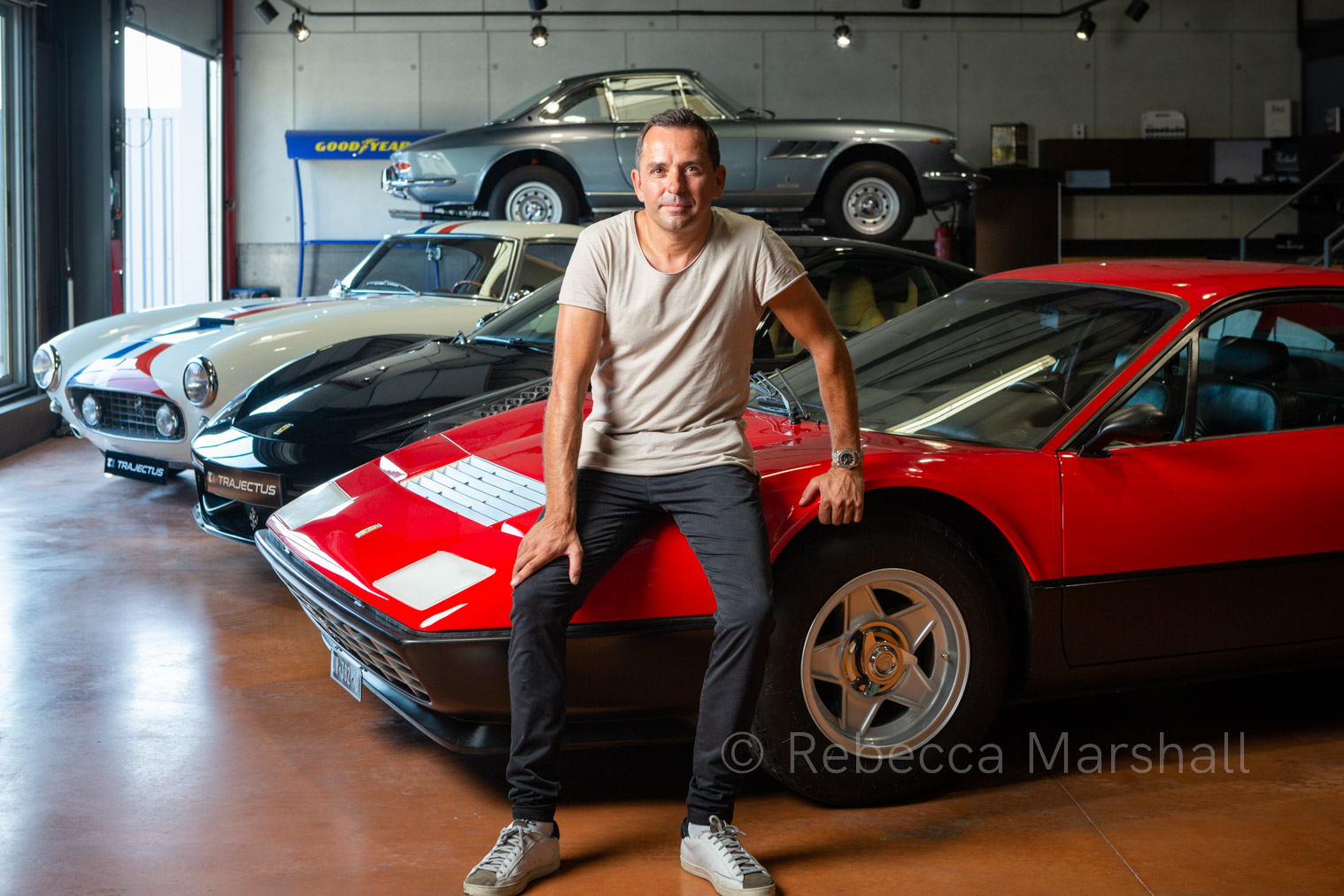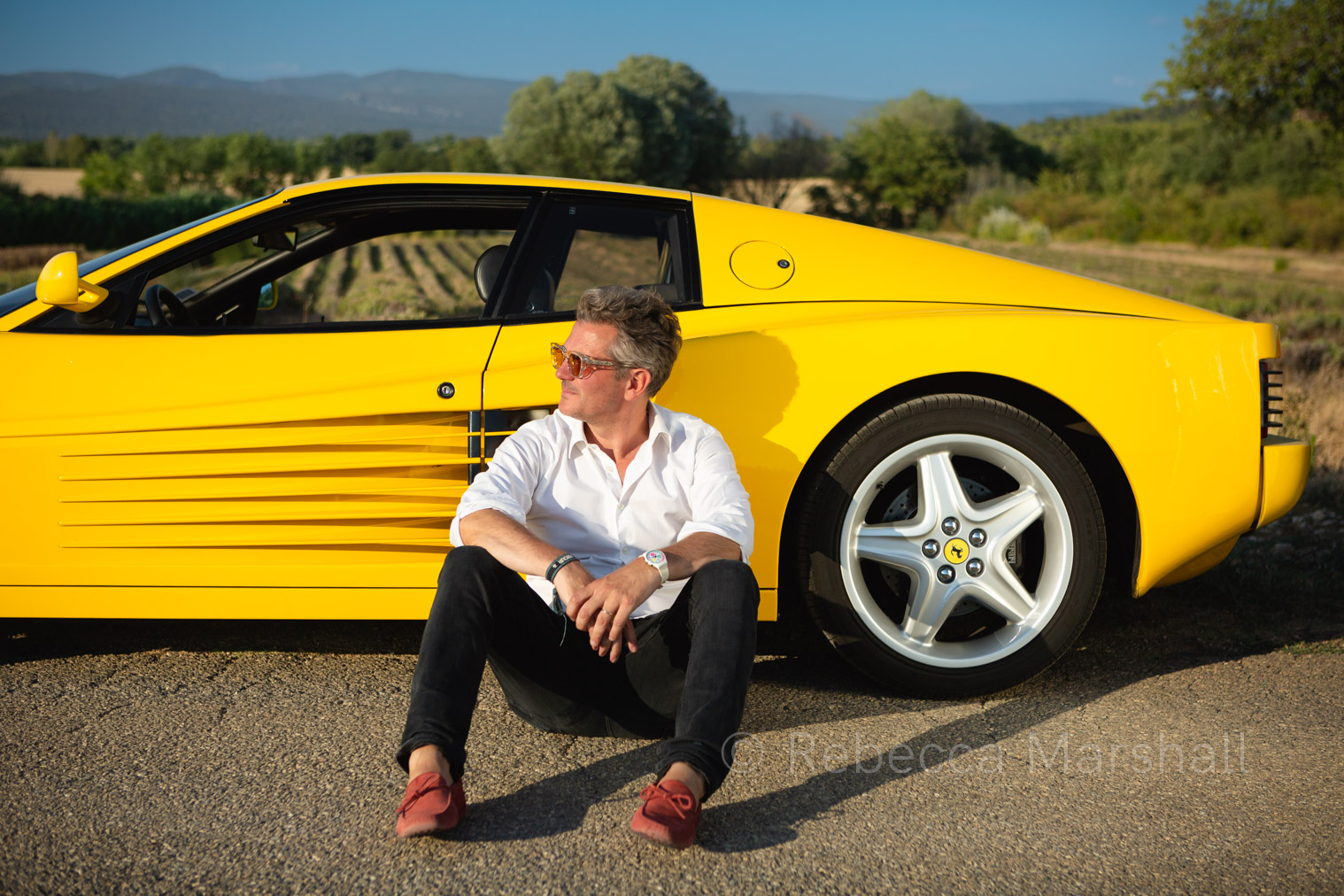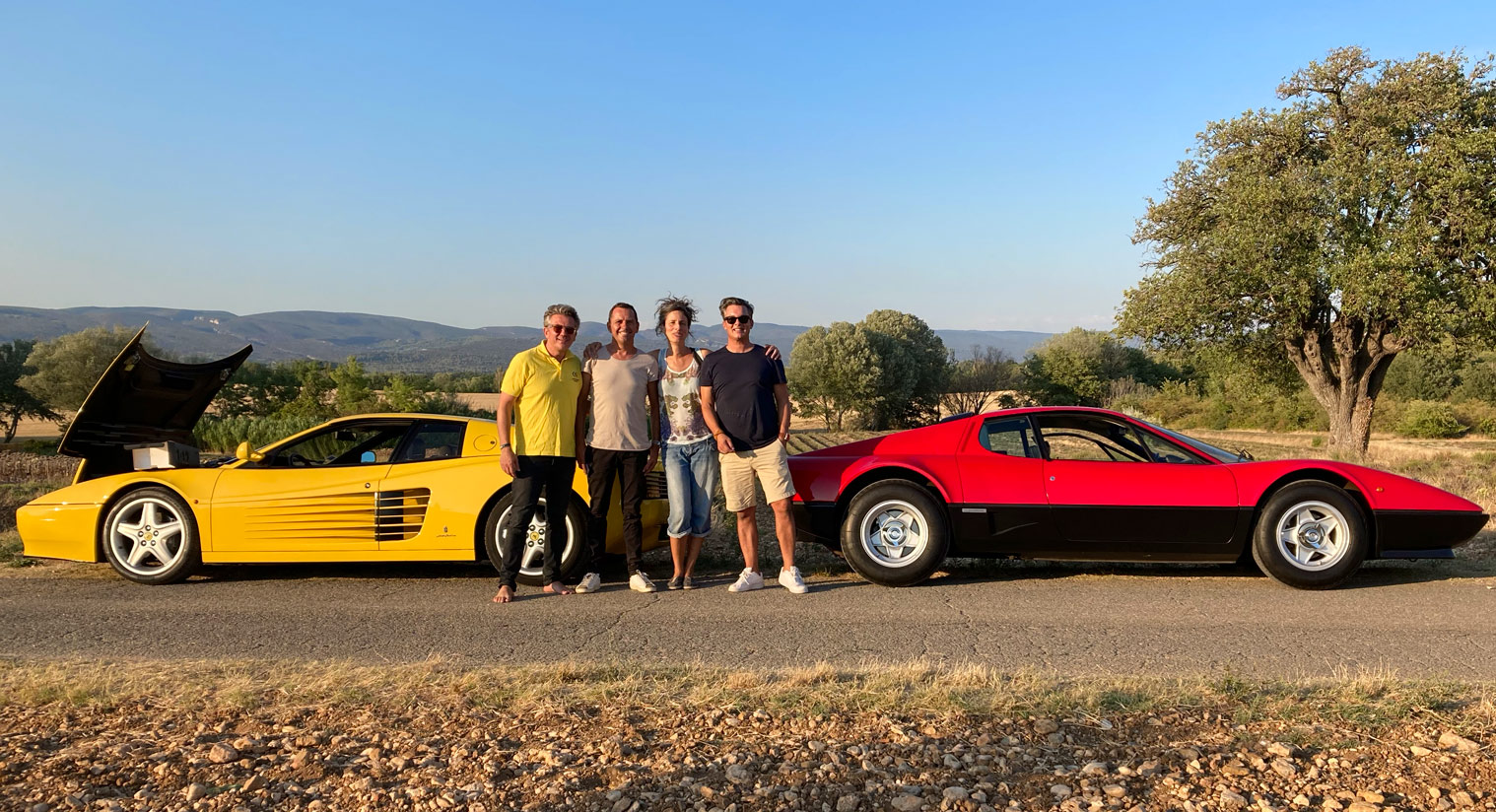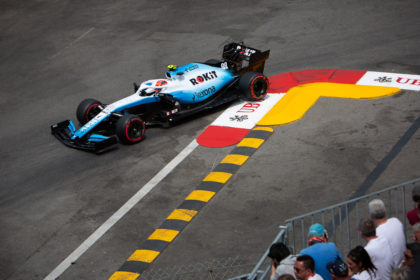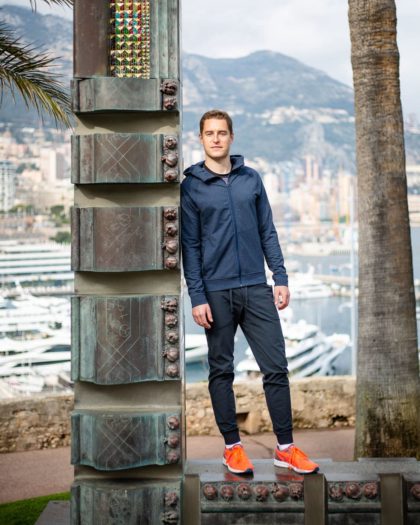Some people collect stamps … others collect Ferraris. The latter were of interest to French magazine Le Point this summer for a feature, “How Ferrari drives them crazy“, marking the 75th anniversary of this epic brand. As photographer, I was commissioned to make portraits of one happy collector.
Ferrari has an impressive business model, to say the least. Inspiring loyalty -if not devotion- from clients worldwide, many of whom buy several models, Ferrari pulls in exceptionally high net gains for the sector (75 000€ of the sale of each car is pure profit, on average) and it has created a culture of rarity. Only 11,000 new cars are made every year, and demand far exceeds supply. Whoever you are, there is no queue-jumping: currently a buyer might wait up to 2 years for the key to their latest purchase. The price of a Ferrari, starting at 212 000 €, can reach stratospheric figures, and the vintage market is quietly but effectively controlled (a Ferrari must be a long term investment, after all). One ‘old’ Ferrari was recently sold at auction for an eye-watering $42 million.
I’d worked with writer Béatrice once before, to make the portrait of a hedge fund king in Monaco. When she called from Paris to discuss this new assignment, I wasn’t surprised to learn that the dealership in Monaco sells more Ferraris than any other in France. Did I happen to know any Ferrari collectors, being a Monaco photographer? Those Béatrice had been in contact with so far had been happy to share anecdotes, but not their names or faces (one humble owner of 40 Ferraris asked to be named ‘Le Provincial‘). I did indeed have an idea: a jovial Welsh car industry business leader, the subject of a corporate portrait I’d made in Monte Carlo. He quickly confirmed his credentials by text: “I own probably the most famous LaFerrari [a model of Ferrari] on the planet: the only one ever made in green“. However, it transpired that the car, originally owned by JK of Jamiroquai, was currently in the UK for a new battery to be fitted… which wouldn’t arrive for 5 months. Another Ferrari aficionado I knew was unavailable, busy sailing his superyacht around the Med.
Sébastien Verdeaux, is based in Paris not Monaco, and, with only 4 Ferraris to his name (and 3 others on order), is not considered a big collector. Yet what he might lack in numbers, he makes up in ardour. A self-confessed fan since the age of 7, Sébastien is not only a mine of Ferrari information, but also deeply emotionally invested in “the Ferrari family”. I met and photographed him on holiday, in the Lubéron. “What I love most about the brand is its human side. The world of Ferrari is a small world, everyone knows everyone“. Sébastien’s passion doesn’t stop at earthly life: he even wishes to be buried in Maranello [the small Italian town, home to all Ferrari’s operations].
Sébastien’s excitement was palpable as he told me of an imminent visit to Maranello – to work on the configuration of his very own, unique car. Every year, 400 hopefuls are selected to customise their own Ferrari (paying for the privilege, of course). Sébastien’s dream-machine is to be an almost exact replica of the ‘Holy Grail of the Testarossa’, the car designed for Gianni Agnelli (CEO of Fiat) in 1986. Unfortunately, when Sébastien got the model version of this car out to be photographed, a tiny piece of chrome fell off and disappeared…but even this didn’t dampen his mood for long.
Before I left the French Riviera, Sébastien had suggested that I might photograph his friend Benoît too. Béatrice was dismissive, but when I pointed out that Benoît Tréluyer was an ex-champion racing car driver (see my portrait of another racing driver) who’d won Le Mans 3 times, and was now owner of a caretaking company for over 40 prestige sportscars, she’d quickly changed her mind.
I made Benoît’s portrait at his main garage in Coustellet, which seemed to double as a luxury man-cave. Complete with a bar, pool table (calibrated with laser precision; I wasn’t allowed to move it to one side to set up my lights) and a giant screen on which Grand Prix races are shown, the space was also home to several vintage Ferraris. The team were careful as they moved each car into position for my photographs, and I was careful as I moved between them, conscious of my camera swinging from its shoulder-strap. One of the cars was a Ferrari that had won Le Mans back in the 1960s. Only 36 of this model had ever been made, and this was the only one left belonging to a Frenchman. It was apparently the second most valuable car in world, with a value of €80 million.
By the time I’d finished Benoît’s portrait, the afternoon light was starting to become that special South of France, summer gold, so we decided to take a couple of Ferraris out into the lavender-lined lanes of the Lubéron for Sébastien’s photographs. I was disappointed to have to turn down a lift in Benoît’s 1978 retro Ferrari 512 BB (clearly, with no boot, not designed for a photographer and their gear) and instead, faced a considerable driving challenge, tearing down single track roads in a valiant quest to keep up with Benoît’s and Sébastien’s cars in my Skoda. At least I wasn’t going to miss them on the horizon, in eye-popping shades of yellow and red (red was the original brand colour, and still today, 45% of Ferraris sold are red).
I might not be very interested in cars, but I had to admit that these two (which were lucky to be out – many Ferraris are never taken away from the comfort of their garages – ) did look good amid the glorious Lubéron landscape. Sébastien and his friend Christophe (who’d come along for the ride, and turned out to be a handy photographer’s assistant, kindly holding my reflector for the portraits), were in raptures over the beauty of Ferraris’ lines – and I was surprised to find myself concurring. “Just look at the arse on that!” said Christophe. “I don’t have a mistress. Ferrari is my mistress!” said Sébastien, taking the metaphor one step further.
Sébastien agreed to try a full yellow-on-yellow portrait, changing his white shirt at the end of the shoot for an authentic Ferrari custard number, and popping on a pair of sunglasses signed by designer Alessandro Squarzi – exact copies of the glasses that company founder Enzo Ferrari had sported back in the 60s. By then, all three men had dinner invitations that they were now late for, so after the final frame, without further ado, they scorched off into the sunset. As the echos of their parting ‘vrroomm‘ died away, and the land became peaceful again, I was quite happy to pack up my gear and move off at a considerably slower speed, in a much less colourful vehicle…
> See Portrait portfolio
